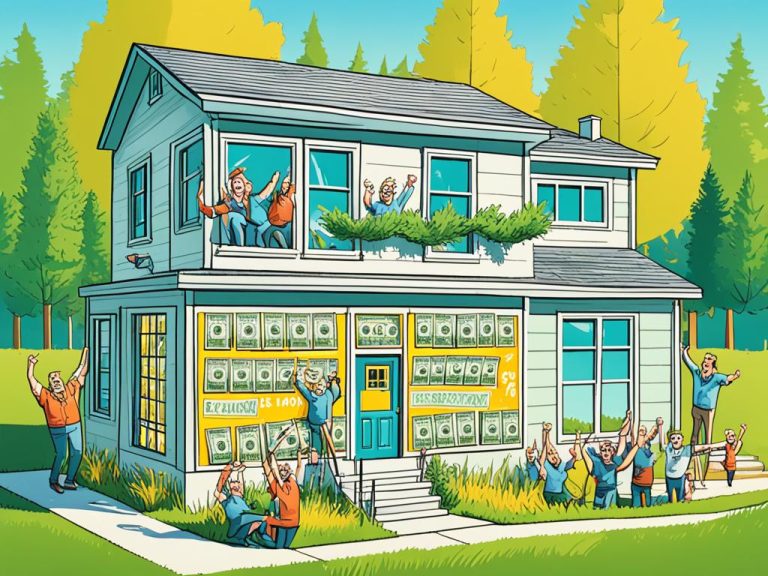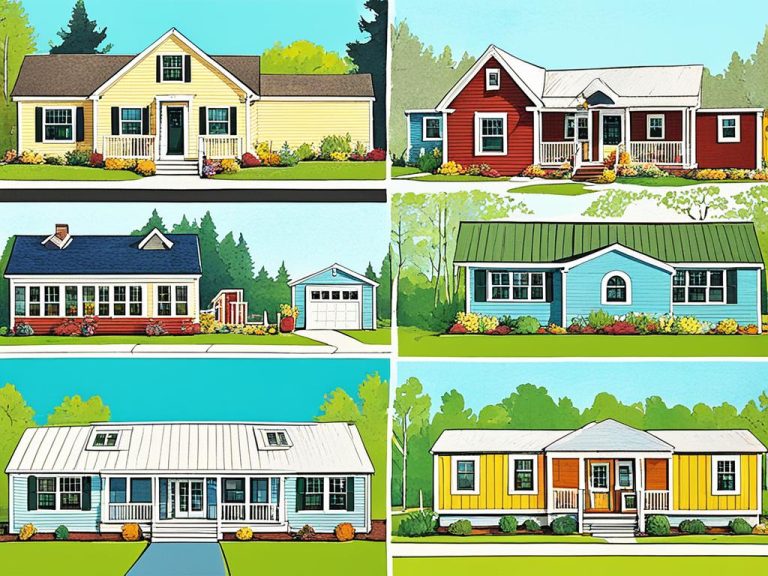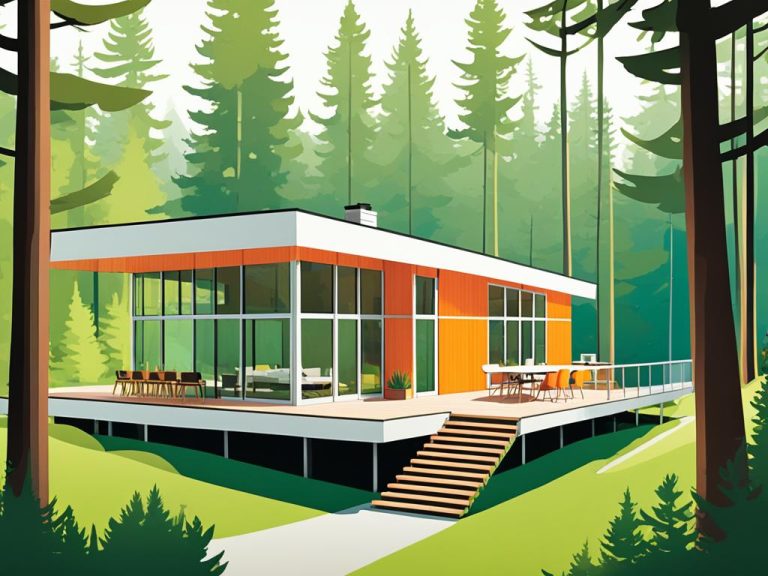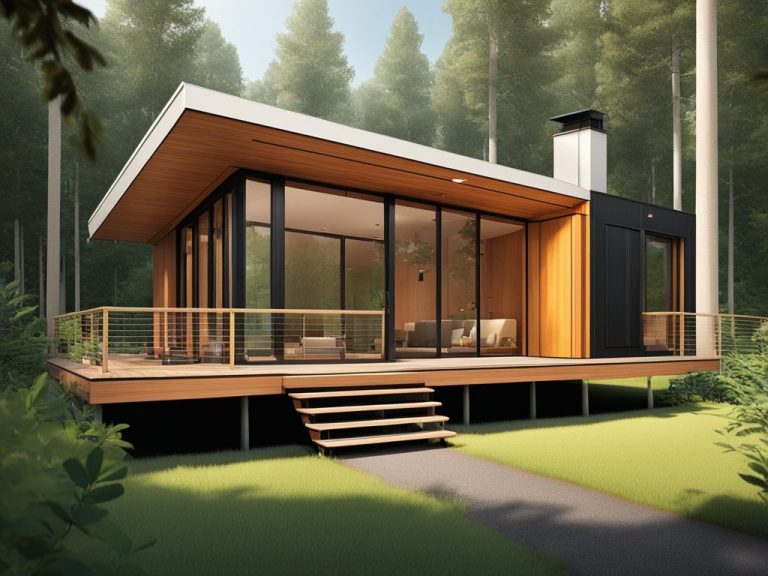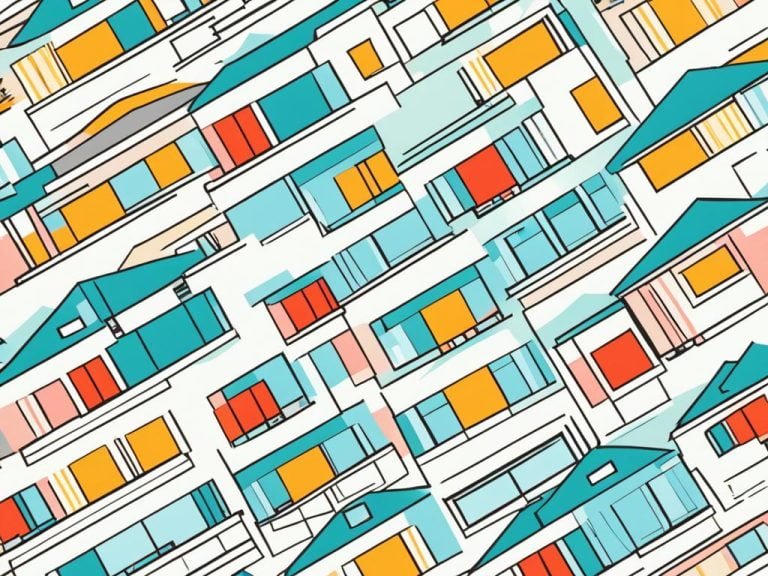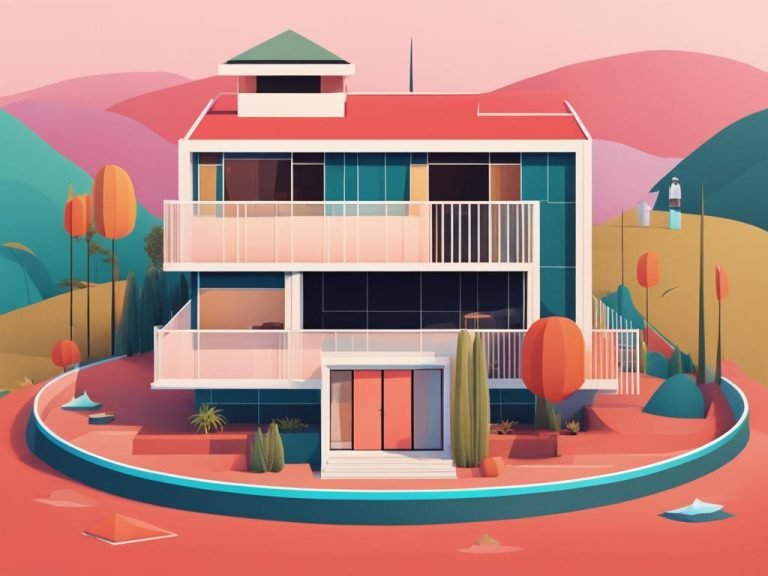Exploring 1940s Prefab Homes: A Look Back
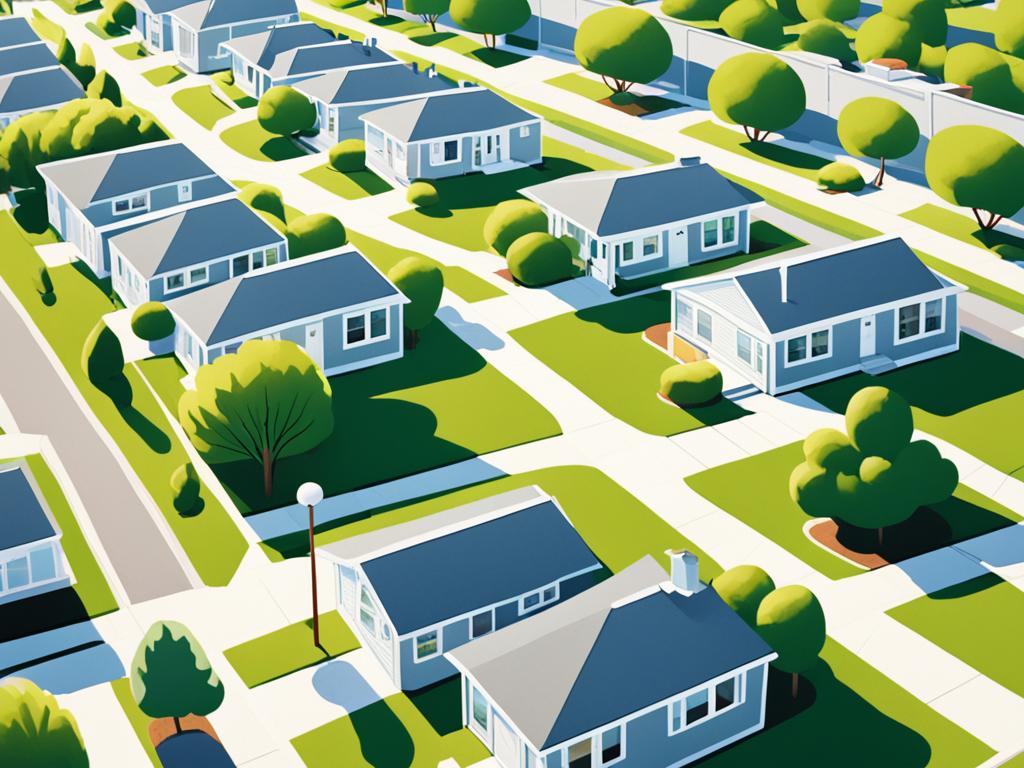
After the devastation of World War II, Britain faced a severe housing crisis, with millions of homes destroyed. In response, the government implemented a Temporary Housing Programme, which aimed to build prefabricated houses quickly and affordably. These prefab homes, built in the 1940s, revolutionised post-war domestic architecture in the UK.
Key Takeaways
- Prefab homes were a response to the post-war housing crisis in 1940s Britain.
- They were built quickly and affordably through the Temporary Housing Programme.
- 1940s prefab homes offered modern conveniences and encouraged self-sufficiency.
- Some 1940s prefab homes still stand today, while others have been preserved in museums.
- Prefab homes continue to be popular today, offering affordability and sustainability.
The Rise of Prefab Homes in the 1940s
With the housing crisis in full swing, then British Prime Minister Winston Churchill declared the need for “prefabricated, or emergency, houses” to address the housing problem. The government’s aim was to build half a million prefab homes, although the final number fell short. From Spring 1946, over 156,000 prefab houses were constructed across the UK, assembled in record time. These affordable and quick-to-build homes offered a temporary housing solution for servicemen returning from the war and their families.
During the turbulent years of the 1940s, wartime prefab houses became the symbol of hope and progress. The unique concept of prefabrication allowed for the mass production of standardized, factory-built components that could be readily assembled on-site. This streamlined construction method was a response to the urgent need for efficient housing solutions in the aftermath of World War II.
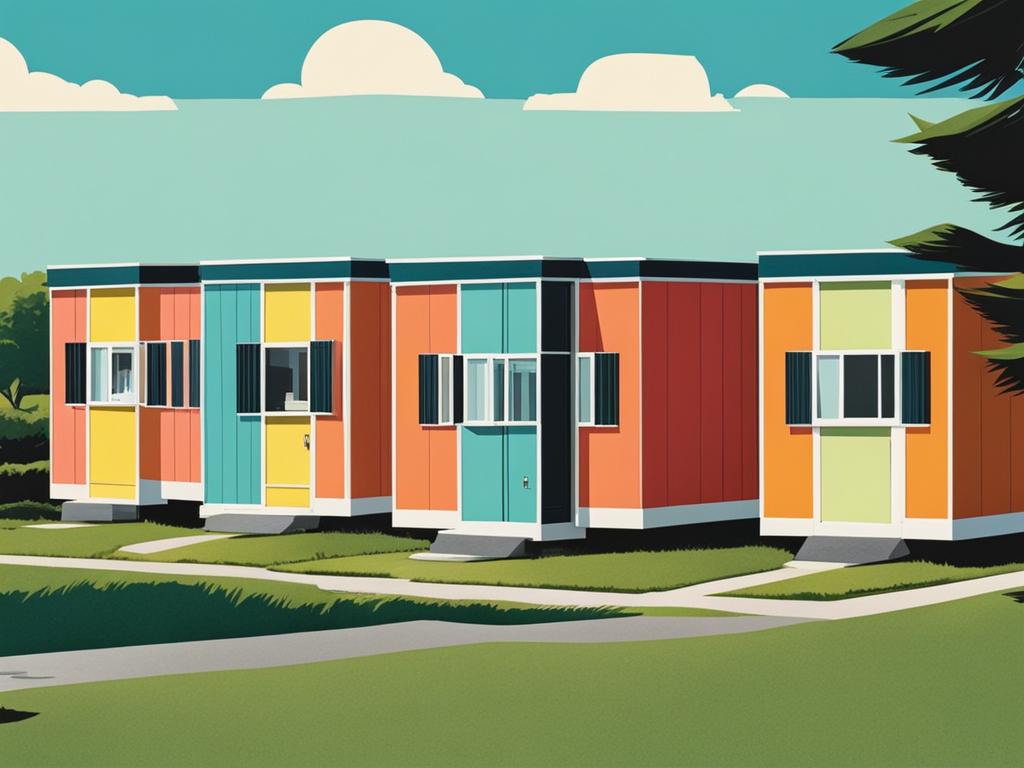
Designed for rapid construction and affordability, 1940s prefab homes offered a way to tackle the housing crisis head-on. With their modular structures, these homes could be assembled quickly, reducing the waiting time for families in desperate need of shelter. The speed and efficiency of prefabrication made it possible to construct an entire neighbourhood in a matter of months, providing a sense of stability in uncertain times.
Although the initial goal of half a million prefab homes was not met, the impact of this housing initiative cannot be understated. It paved the way for innovative design and construction methods, influencing the future of architecture and housing across the UK. The legacy of 1940s prefabs can still be seen in the surviving communities and the memories of those who called these homes their own.
The Unique Features of 1940s Prefab Homes
Designed with modern conveniences, 1940s prefab homes were considered luxury dwellings for their time. These retro prefab homes were highly sought after in the post-war period due to their innovative design and amenities.
Each vintage prefab house featured two bedrooms, a hallway, a living room, a bathroom, interior toilets, constant hot water, and a fitted kitchen with a refrigerator. These features provided residents with comfort and convenience, allowing them to enjoy a higher standard of living.
The layout of these homes was also designed to encourage self-sufficiency. With detached layouts, residents had the freedom to cultivate their own vegetables, fostering a sense of independence and sustainable living.
Take a moment to glimpse into the past with this image of a 1940s prefab home:
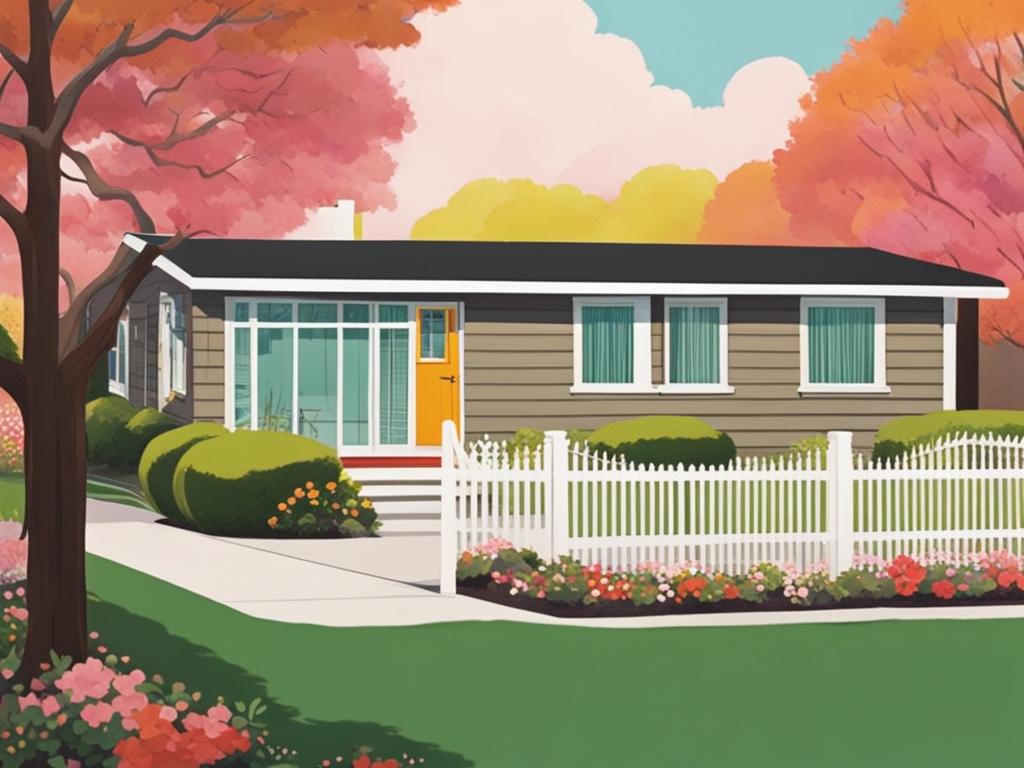
Step inside and discover the charm and ingenuity of these vintage prefab houses, where history and comfort seamlessly blend together.
The Legacy of 1940s Prefab Homes
Over 70 years later, some 1940s prefab homes still stand, cherished by their residents. The Excalibur Estate, located in Catford, southeast London, is home to the last community of post-World War II prefabricated houses.
Despite efforts to preserve these unique architectural and social entities, demolitions have been carried out in the name of regeneration and rising land values. However, some prefab homes have been preserved in museums and recognized by Historic England.
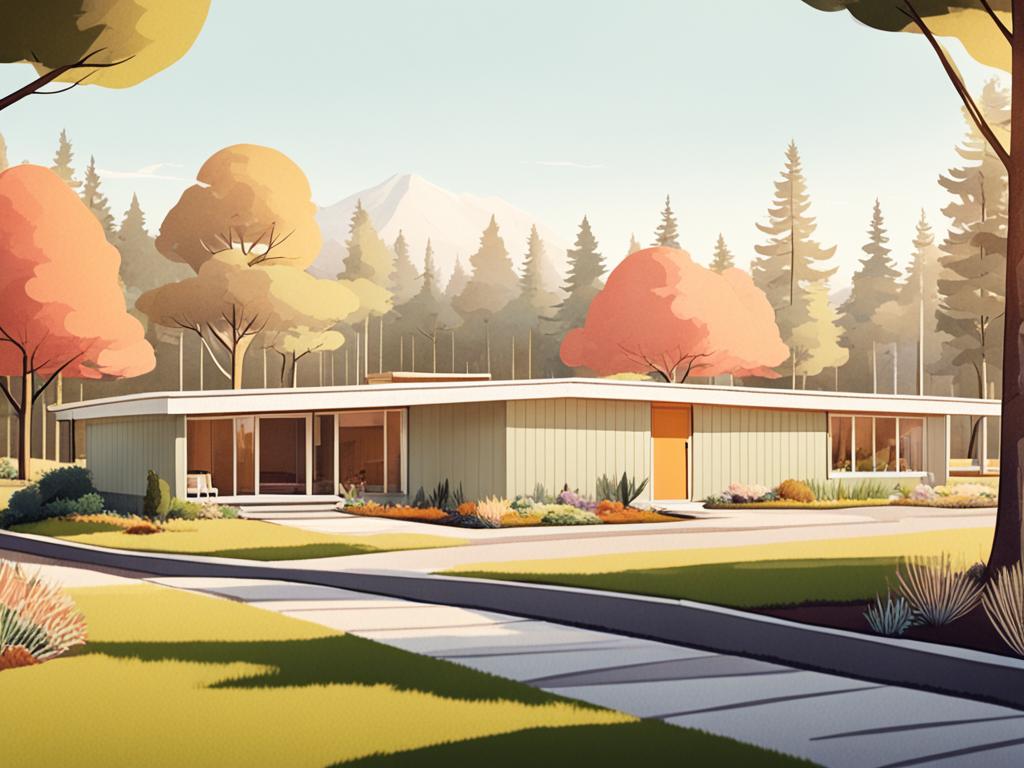
These prefab residents represent a significant part of the 1940s prefab architecture, a symbol of the determination and resilience of a generation recovering from the effects of the war. Their design, although regarded as temporary at the time, has endured the test of time, showcasing the ingenuity and practicality of post-war housing solutions.
The Excalibur Estate, with its rows of prefab homes, provides a glimpse into a bygone era and serves as a reminder of the challenges faced by communities in rebuilding their lives and neighborhoods after the war. It stands as a testament to the social history of the time, offering a living connection to the past for future generations to appreciate and learn from.
While some may see these prefab homes as outdated or no longer relevant, they hold immense historical value and contribute to the architectural tapestry of their communities. The preservation and recognition of these homes are crucial in honoring the experiences and memories of those who lived in them and celebrating the achievements of the 1940s prefab architecture.
Prefab Homes Beyond the 1940s
While the 1940s marked the peak of prefab home construction, the concept of prefabrication has experienced a resurgence in recent years. Modern prefab homes are gaining popularity due to their affordability, sustainability, and fast construction times.
These factory-made homes are designed to meet modern safety standards and offer energy-efficient features. With advancements in technology and construction techniques, prefab housing today is far from its post-war origins.
Modern prefab homes are customizable to meet individual needs and preferences. They come in a variety of designs, ranging from sleek and contemporary to traditional and rustic. Architects and builders are embracing prefabrication as a way to create affordable and stylish housing options.
The use of sustainable materials and eco-friendly building practices is a key feature of modern prefab homes. These homes are designed to minimize environmental impact and promote energy efficiency. From solar panels and rainwater harvesting systems to green roofs and high-performance insulation, prefab housing today prioritizes sustainability.
In countries like Wales, there are even plans to build thousands of affordable prefab homes using sustainable materials. This commitment to environmentally friendly construction ensures that modern prefab homes not only benefit homeowners, but also contribute to a greener future.
The Benefits of Modern Prefab Homes
- Rapid Construction: Modern prefab homes can be built in record time, reducing construction costs and allowing homeowners to move in quickly.
- Cost-Effective: The efficiency of factory manufacturing and standardized designs make prefab homes more affordable compared to traditional construction.
- Durability: Factory-built homes are engineered for strength and durability, meeting rigorous quality control standards.
- Flexibility: Customization options allow homeowners to personalize their living spaces, adding unique touches to create their dream homes.
- Sustainability: Energy-efficient features and the use of sustainable materials make prefab homes environmentally friendly and reduce carbon footprint.
With the continued growth and innovation in the prefab industry, the future of housing looks promising. Modern prefab homes offer an attractive solution for those seeking affordable, sustainable, and stylish living spaces.
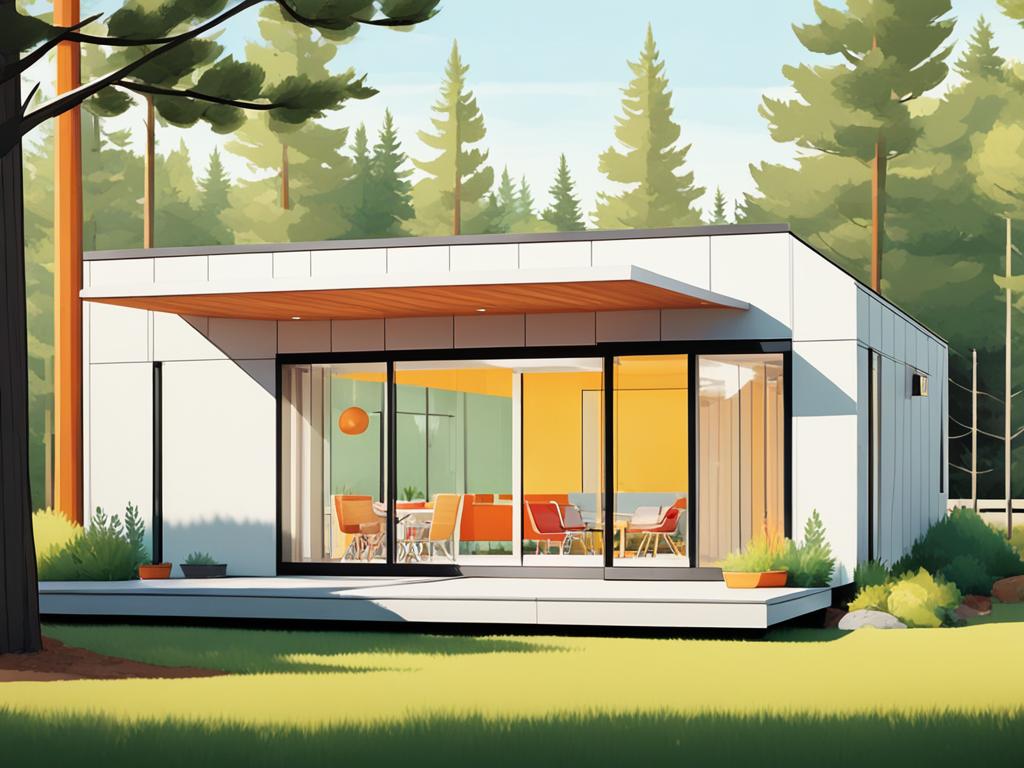
The Challenges of Prefab Home Insurance
Despite advancements in prefab home construction, some homeowners face challenges when it comes to securing affordable insurance for their properties. Many insurers consider prefab homes to have non-standard risks, leading to higher premiums or even refusals to provide coverage.
When insuring a prefab home, homeowners often encounter difficulties due to the unique nature of these properties. Insurers may be unfamiliar with the specific construction methods and materials used in prefab homes, which can result in uncertainty regarding the risks involved and the appropriate coverage to offer. As a result, insurance providers may opt for caution by charging higher premiums or being hesitant to insure prefab homes altogether.
However, there are specialist insurance brokers who understand the challenges faced by prefab homeowners and offer coverage tailored to their needs. One such specialist is Adrian Flux, a trusted insurance provider that offers comprehensive coverage for a wide range of prefab and modular homes, including post-war properties, self-built homes, and modern kit homes. These specialist brokers have the knowledge and expertise to assess the unique risks associated with prefab homes and provide appropriate coverage at competitive prices.
By working with a specialist insurance broker, prefab homeowners can ensure that their valuable investments are adequately protected. These brokers understand the intricacies of prefab home construction and the potential risks involved, allowing them to customize insurance policies that provide comprehensive coverage for both the structure and contents of the home.
Having proper insurance coverage for a prefab home is essential to safeguard against potential risks such as fire, theft, natural disasters, and liability claims. With the right insurance policy, homeowners can have peace of mind knowing that their homes are protected financially, allowing them to fully enjoy the benefits of prefab home ownership.
In summary, while prefab homeowners may face challenges when it comes to securing affordable insurance, specialist insurance brokers, like Adrian Flux, offer tailored coverage for prefab homes, including post-war properties. By working with these experts, homeowners can ensure their prefab homes are properly protected against potential risks, providing peace of mind and allowing them to fully enjoy the benefits of prefab home ownership.
The Kitchen and Daily Life in a 1940s Prefab Home
In 1940s prefab homes, the kitchen was a room that saw significant changes compared to traditional homes. These prefab homes, designed for affordability and quick construction, often lacked modern labor-saving devices such as fridges, freezers, and washing machines.
Daily life in a 1940s prefab home meant adapting to manual tasks and finding creative solutions. To keep the kitchen clean, residents relied on carpet sweepers instead of vacuum cleaners and used a bucket of soap and water for mopping the floor. Without the convenience of modern appliances, cooking and meal preparation became more time-consuming and required careful planning.
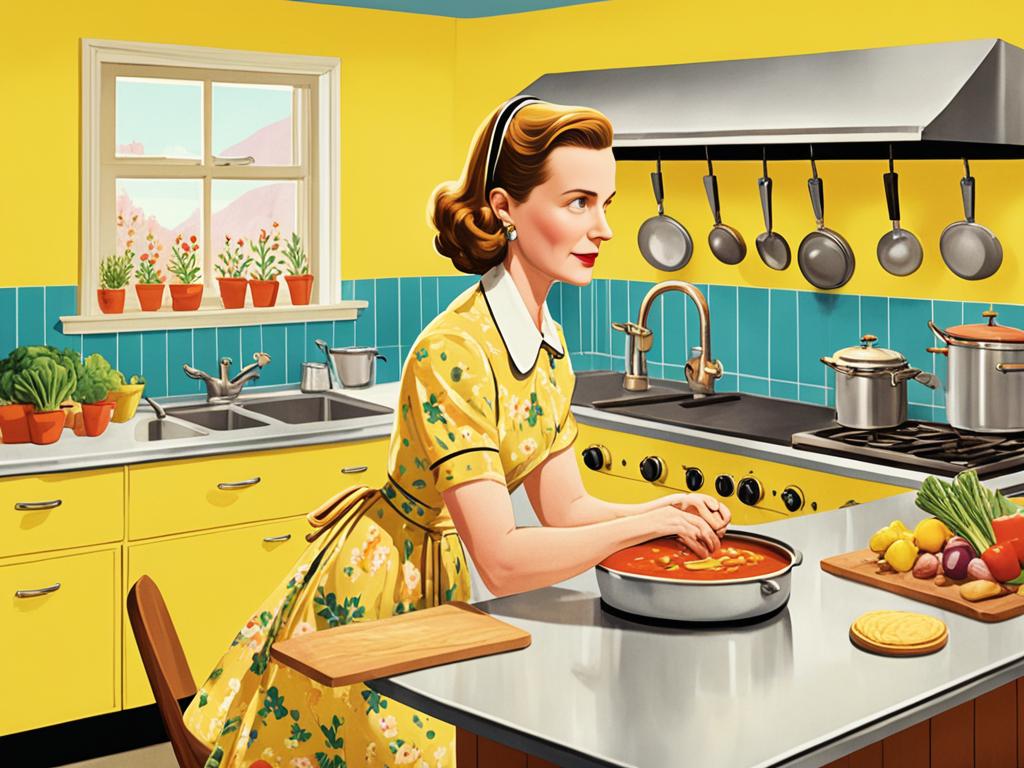
During this period, food was rationed, and households had to make the most of limited supplies. Many families relied on larder cupboards or separate pantries for storage, carefully organizing their provisions to make them last. Cooking in a 1940s prefab kitchen was a laborious but essential part of daily life, with residents finding ways to nourish their families with the resources they had.
Conclusion
The construction of prefab homes in the 1940s played a crucial role in addressing the serious housing crisis that plagued post-war Britain. These innovative and affordable homes provided a much-needed solution for the millions of people who were displaced by the war, offering them a chance to rebuild their lives and create thriving communities.
While it is unfortunate that many of these prefab homes have been demolished in recent years, their legacy lives on through preservation efforts and the cherished memories of the residents who called them home. These homes symbolize the resilience and resourcefulness of a generation that faced immense challenges and found creative solutions to rebuild their lives.
The story of 1940s prefab homes serves as a reminder of the importance of affordable housing and the positive impact it can have on communities. It highlights the need for continued efforts to address housing crises and ensure that everyone has access to safe and affordable homes. As we reflect on the history of prefab homes in the 1940s, we are inspired to find innovative solutions to today’s housing challenges and build a brighter future for all.
FAQ
What was the purpose of building prefab homes in the 1940s?
The prefab homes built in the 1940s were a response to the severe housing crisis in Britain after World War II. The government implemented a Temporary Housing Programme to quickly and affordably provide homes for the millions of people displaced by the war.
How many prefab homes were built in the 1940s?
Over 156,000 prefab homes were constructed across the UK in the 1940s.
What were the features of 1940s prefab homes?
1940s prefab homes were designed with modern conveniences for their time. They featured two bedrooms, a hallway, a living room, a bathroom, interior toilets, constant hot water, and a fitted kitchen with a refrigerator. The homes also had detached layouts to encourage self-sufficiency, with space for residents to grow their own vegetables.
Are there any surviving 1940s prefab homes today?
Yes, the Excalibur Estate in Catford, southeast London, is home to the last community of post-World War II prefabricated houses. However, many prefab homes have been demolished in recent years in the name of regeneration and rising land values.
Are prefab homes still popular today?
Yes, prefab homes have experienced a resurgence in recent years due to their affordability, sustainability, and fast construction times. Modern prefab homes are gaining popularity for their energy-efficient features and modern design.
Do prefab homeowners face challenges with insurance?
Yes, some insurers consider prefab homes to have non-standard risks, leading to higher premiums or refusals to provide coverage. However, specialist insurance brokers, like Adrian Flux, offer coverage for a wide range of prefab and modular homes, including post-war properties and modern kit homes.
How did the kitchen in a 1940s prefab home differ from today?
1940s prefab homes often lacked labor-saving devices such as fridges, freezers, or washing machines. Kitchen routines revolved around manual tasks, and households relied on larder cupboards or separate pantries for food storage.
What impact did 1940s prefab homes have on the housing crisis?
The construction of 1940s prefab homes played a crucial role in alleviating the housing crisis in post-war Britain. These affordable and innovative homes provided a solution for those displaced by the war and allowed communities to thrive.

